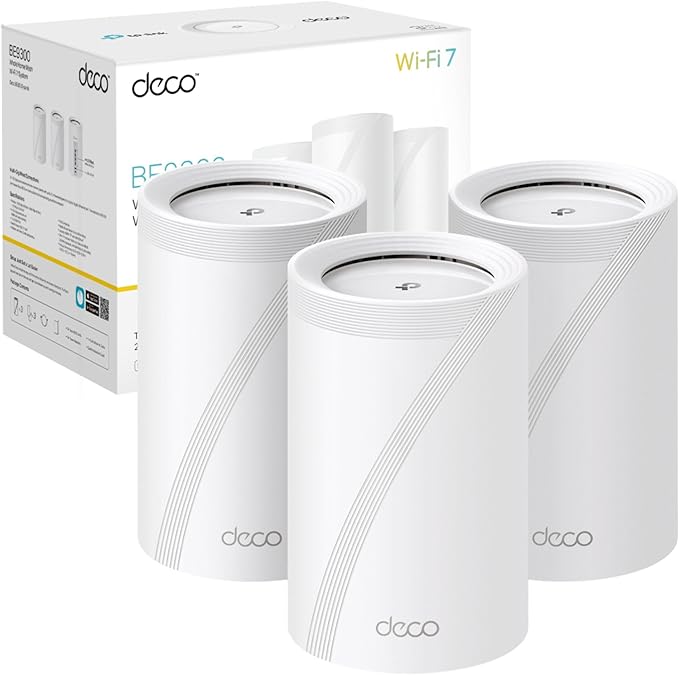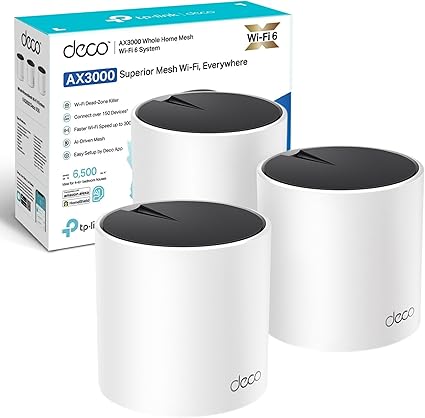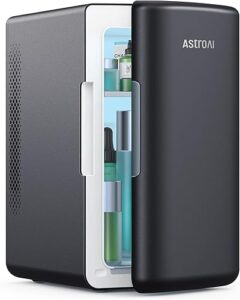Tired of buffering during your favorite shows or sluggish download speeds? You’re not alone. In today’s hyper-connected world, a fast and reliable WiFi connection is crucial. That’s where TP-Link Deco systems come in. These advanced tools promise to boost your home network, providing the speed and stability you need. This post will explore simple yet effective ways to maximize WiFi speed using Deco systems. You’ll discover practical tips to optimize your setup and keep everything running smoothly. Say goodbye to lag and hello to seamless streaming and gaming.
Understanding TP-Link Deco Systems
In today’s world, maintaining a seamless WiFi connection is all about embracing the right technology. TP-Link Deco Systems offer a robust solution for whole-home coverage, ensuring your internet remains uninterrupted whether you’re catching up on work or immersing in a gaming marathon.
What is a Mesh Network?

Photo by Yagyaansh Khaneja
Mesh networking represents a revolutionary shift from traditional single-router setups. Unlike conventional networks where a single router radiates WiFi signals, mesh networks use multiple nodes to distribute connectivity evenly throughout your space. Picture it like a team working together to cover every nook and cranny of a large area, eliminating those pesky dead zones that are all too familiar with regular routers.
A mesh network creates a single unified wireless system, so each device connected to the network can communicate without needing to hop back to a central hub. This improves reliability and stability, providing a more consistent internet experience. If you’re curious about how mesh networking outperforms traditional systems, check out Google’s explanation on mesh networks.
Key Features of TP-Link Deco Systems
TP-Link Deco systems aren’t just about connecting. They come loaded with features designed to make your internet experience safer and smoother:
- Parental Controls: Managing screen time and blocking inappropriate content is a breeze. Deco’s robust parental controls let you create unique profiles for each family member with internet usage limits.
- Security Options: Nowadays, digital security is crucial. Deco provides built-in security features like real-time threat management, giving you peace of mind knowing your data is safe from prying eyes.
- Ease of Use: Say goodbye to complicated setup processes. The Deco app guides you through setup effortlessly, allowing you to manage your network with user-friendly controls. Monitor your home WiFi from anywhere with just a tap. For an in-depth overview of these features, visit TP-Link’s own Deco Mesh WiFi page.
These features, combined with TP-Link’s commitment to user-friendly technology, make Deco systems a powerhouse option for anyone looking to up their WiFi game. By investing in such a system, you’re choosing reliable, high-speed internet connectivity that meets the demands of modern living.
Setting Up Your TP-Link Deco System for Optimal Performance
Setting up your TP-Link Deco system properly can make a huge difference in the quality of your WiFi at home. Whether you’re working, gaming, or streaming, following these steps ensures you’re getting the best performance possible.
Placement Tips for Deco Units
Where you place your Deco units can significantly impact your network’s effectiveness. Think of each Deco unit as a beacon — the closer they are to what needs the connection, the better. Here are some handy tips to position them just right:
- Central Location is Key: Position the main Deco in a central part of your home. This allows the signal to reach as much of your living space as possible.
- Height Matters: Place your Deco units higher off the ground, roughly at the same level as the devices receiving the signal to improve reception.
- Avoid Obstacles: Thick walls, furniture, and electronic appliances can interfere with signals. Keep Deco units away from such objects to reduce interference.
- Spread Them Out: Don’t cluster your Deco units. Distribute them evenly to ensure full coverage across different rooms and levels.
For further insights on Deco unit placement, visit the TP-Link Home Network Community.
Configuring Your Network Settings
Proper configuration of your network settings can maximize the performance of your TP-Link Deco system. Let’s focus on how to configure basic settings and prioritize devices with QoS (Quality of Service).
- Access the App: Begin by opening the Deco app on your smartphone. This app is your gateway to managing all your network settings.
- Enable QoS: QoS allows you to prioritize bandwidth for specific activities like gaming or streaming. Go to the QoS settings within the app and set your priorities. This could mean more bandwidth for gaming if that’s your top need.
- Select Devices to Prioritize: Within the QoS setting, you can select specific devices that require higher priority. This ensures these devices get the best possible connectivity.
For more detailed instructions on setting up QoS, check out this step-by-step guide from TP-Link.
Following these placement and configuration tips can transform your home network, delivering faster speeds and more reliable connections throughout your residence.
Advanced Features for Speed Enhancement
TP-Link Deco systems come with advanced features focused on enhancing your WiFi speed, offering promising improvements for home networks. Whether you’re streaming, gaming, or busy with online meetings, let’s explore ways these features can optimize your internet experience.
Utilizing Band Steering
Band steering is a smart feature that helps manage your WiFi bands efficiently. But what does that mean for your network speed? Imagine having a personal traffic manager directing your devices to the less crowded, faster highway.
Despite having multiple WiFi bands available (usually 2.4 GHz and 5 GHz), not all devices utilize them equally. Band steering automatically shifts your devices to the optimal band, enhancing performance without manual intervention. This feature minimizes interference and congestion on the network. For more details on how it works, the article What is Band Steering, and is it worth enabling? offers insightful information on its benefits and usage.
Enabling the 5 GHz Band
 Photo by 𝓢𝓱𝓪𝓷𝓮 𝓦𝓮𝓼𝓽 ™
Photo by 𝓢𝓱𝓪𝓷𝓮 𝓦𝓮𝓼𝓽 ™
Switching to the 5 GHz band can be akin to upgrading from a busy city street to a fast highway. This band offers higher speeds and less interference, making it ideal for tasks demanding faster data transmission. To enable the 5 GHz band on your TP-Link Deco, head to the Deco app, which allows you to set preferences. This TP-Link Community discussion provides practical steps on prioritizing and switching bands, allowing you to enjoy faster internet speed with devices closer to the Deco unit.
Firmware Updates and Maintenance
Firmware updates might seem like a chore, but they’re essential for maintaining optimal router performance. Think of these updates as a regular oil change for your car; they’re crucial for keeping everything running smoothly and securely. Updates often include bug fixes, speed enhancements, and critical security patches that shield your network from vulnerabilities. For a deep dive into why this is essential, check the Medium article on firmware updates, emphasizing their role in network protection and performance enhancement.
These advanced features can transform your TP-Link Deco system into a powerhouse for fast, reliable internet throughout your home. Use them wisely to keep your WiFi running smoothly and efficiently as you tackle everyday digital tasks.
Troubleshooting Common Connectivity Issues
Encountering connectivity issues in your home WiFi network can be a frustrating experience. However, with a bit of troubleshooting, you can resolve these problems and enhance the performance of your TP-Link Deco system. Common issues often revolve around dead zones and electronic interference. With the right strategies, you can ensure a smooth, fast connection throughout your home.
Dealing with Dead Zones: Offer strategies to identify and eliminate dead zones in your home.
 Photo by Yan Krukau
Photo by Yan Krukau
Dead zones, those pesky corners of your home where WiFi seems to disappear, can be as frustrating as trying to find a single missing sock. But identifying these areas is the first step towards freedom from dropped signals. Here’s how you can tackle the issue:
- Use a WiFi Analyzer: Think of it as a metal detector for WiFi. Tools like the WiFi Analyzer app can help you map WiFi strength throughout your home.
- Optimal Router Placement: The router should be at the heart of your home, much like a conductor in an orchestra. Place it in a central, unobstructed location to ensure signals reach every corner.
- Adjust Antennas: If your router has adjustable antennas, position them for maximum coverage. Horizontal and vertical positioning can sometimes make a big difference.
- Expand Coverage: You might need to expand your network with additional Deco units if certain areas still have weak signals. For more guidance, check out these strategies on dead zone elimination.
Interference from Other Devices: Discuss how to identify and minimize interference from electronic devices.
Wireless interference from electronic gadgets is like static on a radio – it can disrupt your network, causing slower speeds and intermittent connections. Here’s how to minimize this interference:
- Identify Culprits: Electronic devices such as microwaves, cordless phones, and Bluetooth speakers can interfere with WiFi signals. Make note of devices situated near your router.
- Switch Channels: Just like changing radio stations to avoid static, switching your WiFi network’s channel can help reduce interference. This can usually be adjusted through your Deco app settings.
- Separate Networks: If possible, create separate networks for your 2.4GHz and 5GHz bands to reduce congestion. This way, your high-demand devices have their own lane to drive in.
- Ensure Proper Grounding: Proper grounding of electronic devices can help minimize electromagnetic interference. Learn more about preventing electromagnetic interference.
Troubleshooting connectivity problems doesn’t have to be a chore. With deliberate steps and a little bit of detective work, you can ensure a stable, speedy connection throughout your home. At the end of the day, it’s all about outsmarting those obstacles to keep your WiFi running smooth.
Tips for Maintaining Maximum WiFi Speed
When it comes to maintaining top WiFi speeds, a few key strategies can transform your browsing and streaming experience. Here are practical tips to keep your network running at peak performance consistently.
Regular Speed Tests
Conducting regular speed tests is like giving your WiFi a wellness check. It’s a quick way to assess if everything’s running as it should. You wouldn’t drive a sports car without occasionally checking its speedometer, right? Here’s how you can keep tabs on your network performance:
- Choose a Reliable Speed Test Tool: Use tools like Speedtest.net or Fast.com for accurate results. They’re easy and quick, showing download and upload speeds in a minute.
- Test at Different Times: Network traffic can vary throughout the day. Conduct tests at various times to get a comprehensive picture of your speeds.
- Record Your Results: Keep a log of your speed tests to track performance over time. Any sudden drops could indicate an issue with your setup or service.
- Compare with Provider Speeds: Ensure the results align with the speeds promised by your ISP. If not, it may be time for a tech check or a service upgrade.
Regular checks help identify issues early, so you can enjoy seamless streaming and gaming without interruptions.
Managing Connected Devices
Think of your WiFi network like a stretchy band; the more you pull it in different directions, the more tension it experiences. Similarly, connecting too many devices can stretch your bandwidth thin, slowing everything down. Here’s how to manage this effectively:
- Prioritize Critical Devices: Use features like Quality of Service (QoS) to allocate more bandwidth to essential devices, ensuring they run smoothly.
- Limit Guest Access: Providing your WiFi password to too many guests can quickly consume bandwidth. Set up a guest network to limit access without compromising your main network performance.
- Monitor Device Usage: Keep tabs on which devices are connected and their usage. Apps or web interfaces provided by your ISP or router can help manage this.
- Upgrade When Necessary: If your current system can’t handle the number of devices, consider upgrading to a model that can manage higher traffic effectively. Learn more about the impact of multiple devices.
By actively managing how many devices are on your network and what they’re doing, you can maintain a robust and responsive WiFi connection that meets all your household’s needs.
Conclusion
Maximizing your WiFi speed with TP-Link Deco systems is easier than you might think. Start with strategic placement of your Deco units. Central locations, like the living room, provide better coverage. Don’t forget to keep them away from thick walls or bulky furniture.
Next, dive into the Deco app. Set your priorities using QoS. This boosts performance for activities like gaming or streaming. And always enable the 5 GHz band for devices that support it. It’s faster and less crowded than the 2.4 GHz band.
Regular maintenance is crucial. Keep your firmware updated to benefit from the latest improvements and security patches. Speed tests are a quick way to check your network’s health. Record your results to spot any issues early.
Implement these tips today and enjoy a smoother, faster connection. How could optimizing your setup change the way you connect at home? Feel free to share your experiences or questions in the comments below. Your input could help others on their journey to better WiFi.


